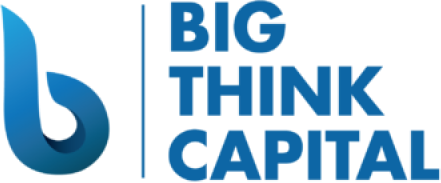You’ve found the perfect building for your business. Now comes the most critical part of the deal: securing the financing. The loan you get will impact your company’s bottom line for years to come, making it one of the most important financial decisions you’ll make as an owner. A loan amortized over 30 years can offer manageable monthly payments, but the interest rate determines the true cost of that capital. Before you sign on the dotted line, you need a clear picture of the market. Here’s what you need to know about current 30 year commercial mortgage rates and the key factors that will determine the final number you’re offered.
Key Takeaways
- Plan for the Balloon Payment: A 30-year commercial mortgage typically refers to the payment calculation (amortization), not the loan’s lifespan. Most have shorter terms of 5-10 years, ending in a large final payment that you’ll need to pay off or refinance.
- Your Rate Is Tied Directly to Risk: Lenders offer better rates to less risky borrowers. You can secure a lower rate by strengthening your credit profile, increasing your down payment (lowering the LTV), and choosing a property with a strong, verifiable income stream.
- Shop Smart and Be Prepared: Don’t just go to your bank—compare offers from credit unions, non-bank lenders, and SBA programs to find the best fit. You can make the entire process smoother and faster by gathering your financial statements and business plan before you apply.
What Are 30-Year Commercial Mortgage Rates?
When you’re ready to buy a property for your business, understanding the financing is your first big step. A 30-year commercial mortgage is a loan used to purchase or refinance a business property, with the payments calculated over a 30-year period. This long amortization schedule helps keep your monthly payments manageable. However, it’s important to know that most commercial loans have shorter terms—meaning you’ll likely need to pay off the remaining balance or refinance after a set number of years, like five or 10. Let’s break down what the rates look like and how they work.
A Snapshot of the Current Market
If you’re looking for a ballpark figure, current commercial loan rates generally fall somewhere between 5.38% and 13.25%. For a standard commercial mortgage, you’re more likely to see rates in the 5.63% to 9.25% range. Think of these numbers as a starting point. The final rate you secure depends heavily on your business’s financial health, your credit score, the type of property you’re buying, and the lender you work with. These rates aren’t static; they move with the economy. Keeping an eye on current market trends can help you time your application, but the best rate will always come down to the strength of your specific deal.
Choosing Between Fixed and Variable Rates
You’ll typically have two main options for your mortgage rate: fixed or variable. A fixed-rate mortgage locks in your interest rate for the entire loan term, giving you predictable, consistent monthly payments. This is a great choice if you value stability and want to budget for the long haul. On the other hand, a variable-rate (or adjustable-rate) mortgage often starts with a lower initial rate that can change over time based on market fluctuations. While this could save you money if rates drop, it also carries the risk that your payments could increase. The right choice depends on your business financial plan and how comfortable you are with potential changes in your monthly payment.
How Commercial and Residential Rates Differ
If you’ve bought a home before, you’ll notice that commercial mortgage rates are usually higher than residential ones. Lenders view loans for business properties as having more risk, so they charge a higher interest rate to compensate for it. Another key difference is the loan structure. As mentioned, commercial loans often have a shorter term than their amortization period. For example, you might have a 30-year amortization schedule but a 10-year term. This means your payments are small and manageable for 10 years, but at the end of that decade, you’ll have to pay the remaining balance in a lump sum—called a balloon payment—or refinance the loan. This structure is less common in residential mortgages but standard in the commercial world.
Key Factors That Determine Your Rate
When a lender reviews your commercial mortgage application, they’re essentially trying to answer one big question: How risky is this loan? The interest rate you’re offered is a direct reflection of their answer. A lower perceived risk usually means a lower rate for you. Lenders look at a combination of factors related to you, the property, and the market to make their decision. Understanding these key elements ahead of time puts you in a much stronger position to secure the best possible terms for your business.
Your Credit Score and Business Financials
Before a lender looks at the property, they’ll look at you. Your financial history tells a story about how you manage debt and financial obligations. Lenders will review your personal and business credit scores, your net worth, and how much cash you have on hand. They also consider your experience in your industry and in managing commercial properties. A strong financial profile with a solid credit history and healthy cash reserves demonstrates that you are a reliable borrower, which can significantly lower the rate you’re offered.
The Property’s Type and Location
The property you’re financing is the lender’s collateral, so its characteristics are incredibly important. Lenders assess the property type—is it a standard office building, a retail space, or a more specialized property like a hotel? They also analyze its location, the strength of its current tenants, and its cash flow. A property in a thriving area with long-term, stable tenants is seen as a safer bet. Lenders will also calculate its Debt Service Coverage Ratio (DSCR) to ensure the property’s income can comfortably cover the mortgage payments. A property with strong fundamentals is more likely to qualify for a favorable rate.
How Loan-to-Value (LTV) Affects Your Loan
The loan-to-value (LTV) ratio is a straightforward but critical metric in commercial lending. It compares the size of the loan you’re requesting to the appraised value of the property. For example, if you’re seeking an $800,000 loan for a property valued at $1 million, your LTV is 80%. From a lender’s perspective, a lower LTV is always better because it means you have more equity—or “skin in the game”—invested in the property. A larger down payment lowers the LTV and reduces the lender’s risk, which can directly translate into a lower commercial mortgage rate for you.
Why Debt Service Coverage Ratio (DSCR) Matters
While LTV measures your equity, the Debt Service Coverage Ratio (DSCR) measures the property’s cash flow. Specifically, it compares the property’s annual Net Operating Income (NOI) to its annual mortgage debt payments. A DSCR of 1.0 means the property generates exactly enough income to cover the loan payments. Lenders, however, want to see a cushion. Most require a DSCR of at least 1.25x, meaning the property’s income is 125% of the mortgage payment. This reassures the lender that the property can handle its debt obligations even if unexpected vacancies or expenses arise.
Broader Market and Economic Trends
Finally, some factors that influence your rate are completely out of your control. Broader economic conditions play a huge role in shaping the lending environment. Commercial mortgage rates are often tied to the yields on long-term government bonds, not just the federal funds rate. This means that even if your application is flawless, trends like inflation, investor confidence, and overall market stability can cause rates to fluctuate. Staying informed about current economic trends can help you time your application and manage your expectations for the rates available.
What Properties and Borrowers Qualify?
Securing a commercial mortgage isn’t just about the numbers on a rate sheet; it’s about matching the right borrower and property with the right loan. Lenders look at the complete picture to assess risk and determine if you’re a good fit. This means they’ll carefully evaluate the property you intend to buy and your financial standing as a borrower. Understanding what they’re looking for ahead of time can make the entire process feel less like a mystery and more like a clear path forward. Let’s break down the key qualifications for both your property and your business.
Types of Eligible Properties
First things first, a commercial loan is specifically for properties zoned for business or investment purposes. This is different from a residential mortgage, which covers single-family homes or smaller multi-unit properties. Lenders will finance a wide range of commercial real estate types, as long as they generate income. This includes properties like office buildings, retail storefronts, industrial warehouses, and hotels. It also covers multi-family apartment buildings with five or more units. Even special-use properties like churches or self-storage facilities can qualify. The main idea is that the property itself is a business asset, capable of producing revenue to help cover the mortgage payments.
How Much Down Payment Do You Need?
One of the biggest questions business owners have is about the down payment. For a commercial mortgage, you should plan for a down payment that’s typically between 20% and 25% of the property’s purchase price. While some loan programs might allow for as little as 10%, others could require up to 30%, depending on the property type and your financial profile. Lenders see a larger down payment as a sign of your commitment and financial stability. It shows you have “skin in the game,” which reduces their risk. Having a substantial down payment not only improves your chances of approval but can also help you secure a more favorable interest rate.
What Lenders Expect for Cash Reserves
Beyond the down payment, lenders want to see that you have enough cash on hand to handle the unexpected. These are your cash reserves. Think of it as a financial safety net that covers mortgage payments, maintenance, and other operating expenses for a set period—often six to 12 months—if the property experiences a vacancy or an unforeseen cost. Lenders will also look at your personal credit score, your business’s financial history, and your overall net worth. They want to be confident that you have the experience and the financial management skills to successfully own and operate a commercial property without stretching yourself too thin.
The Paperwork You’ll Need to Prepare
Getting your documents in order before you apply can significantly speed up the loan process. Lenders will want to see a clear financial picture of both you and the property. Be ready to provide a Personal Financial Statement (PFS), which outlines your assets and liabilities. You’ll also need a Schedule of Real Estate Owned (SREO) if you own other properties. For the property itself, you’ll likely need its Trailing 12-Month Operating Statement (T-12), which details its income and expenses over the past year. Having this financial documentation organized and ready to go shows lenders you’re a serious, well-prepared borrower.
Where to Find a Commercial Mortgage
Once you have your documents in order and a clear picture of what you need, it’s time to find a lender. The right lending partner can make all the difference, not just in the rate you get but in the smoothness of the entire process. Your business’s financial health, the property type, and your timeline will all influence which option is the best fit for you. Exploring a few different avenues is always a smart move to ensure you’re getting the most competitive terms available.
Traditional Banks
Traditional banks are often the first stop for business owners, and for good reason. If you have a strong, established relationship with a bank, you may find they offer competitive deals, especially for loans between $1 million and $10 million. They are familiar with your business history, which can simplify the application process. However, banks are also known for having stringent underwriting criteria and a slower approval timeline. They tend to be more risk-averse, so you’ll need a solid financial profile and a well-prepared business plan to secure funding.
Credit Unions
Don’t overlook your local credit union. As member-owned, not-for-profit institutions, they often reinvest their earnings back into the community by offering favorable terms to members. You may find that credit unions provide competitive rates and are sometimes more flexible with their lending criteria than larger, national banks. Their focus is on serving their members, which can translate into a more personalized and supportive experience. If you value a community-focused approach, a credit union could be an excellent choice for your commercial mortgage.
Non-Bank Lenders
If you need to move quickly or don’t quite meet the strict requirements of a traditional bank, a non-bank lender might be the answer. This category includes private equity firms, hedge funds, and other private lenders who often specialize in commercial real estate. Their main advantage is speed and flexibility; they can frequently approve loans faster and with less documentation than banks. This convenience may come with higher interest rates or fees, so it’s important to weigh the costs against the benefits of a quicker, more accessible funding source.
SBA Loan Programs
The U.S. Small Business Administration (SBA) doesn’t lend money directly, but it does guarantee a portion of loans made by approved lenders. This government backing reduces the risk for lenders, making them more willing to offer favorable terms to small businesses. The two most common SBA loan programs for real estate are the 7(a) and 504 loans. These are particularly well-suited for owner-occupied properties, where your business will operate out of at least 51% of the space. SBA loans often come with longer repayment terms and lower down payment requirements.
Working With a Mortgage Broker
Navigating the world of commercial mortgages can feel overwhelming. Working with an experienced commercial mortgage broker or a financing partner can simplify the entire process. Instead of you applying to dozens of lenders one by one, a broker does the heavy lifting. They use their established network of banks, credit unions, and private lenders to find the best loan for your specific situation and can negotiate terms on your behalf. This approach saves you time, reduces stress, and can ultimately help you secure a better deal than you might find on your own.
Key Mortgage Terms to Know
Getting a commercial mortgage can feel like learning a new language. But once you understand a few key terms, you’ll be in a much better position to compare offers and find the right loan for your business. Think of it as your financial cheat sheet—knowing this vocabulary helps you ask the right questions and ensures there are no surprises down the road. From understanding the true cost of your loan to planning for the future, getting familiar with these concepts is the first step toward making a confident and informed decision.
APR vs. Interest Rate: What’s the Difference?
It’s easy to mix these two up, but the difference is a big deal for your wallet. The interest rate is simply the percentage a lender charges you for borrowing money. It’s a major part of your monthly payment, but it doesn’t tell the whole story.
The Annual Percentage Rate (APR), on the other hand, gives you a much clearer picture of the loan’s total cost. It includes the interest rate plus most of the lender fees and other costs associated with the loan, like origination fees and closing costs. When you compare mortgage offers, always look at the APR. A loan with a lower interest rate might look more attractive at first, but a higher APR could mean you’re paying more in fees over time.
What to Know About Prepayment Penalties
A prepayment penalty is a fee that some lenders charge if you pay off all or part of your mortgage ahead of schedule. You might wonder why you’d be penalized for paying off debt early. Lenders make money from the interest you pay over the life of the loan, and an early payoff cuts into their expected profit.
This is especially important to consider if you think you might sell the property or want to refinance in a few years. Before you sign any loan agreement, ask the lender directly if there are any prepayment penalties. Understanding these terms upfront can help you avoid unexpected fees and give you the flexibility to make the best financial moves for your business in the future.
A Breakdown of Common Fees
Your interest rate and principal payment are just part of the equation. Several other fees are involved in securing a commercial mortgage, and it’s important to budget for them. While the exact costs vary, some of the most common ones include an arrangement fee (also called an origination fee), which is what the lender charges for setting up the loan. This is often 1% to 2% of the total loan amount.
You’ll also likely have a valuation fee to cover the cost of a professional appraiser determining the property’s market value. This can run a few thousand dollars. Other expenses can include legal fees, application fees, and closing costs. Ask your lender for a detailed breakdown of all potential mortgage fees so you have a clear understanding of your total upfront investment.
Your Future Refinancing Options
Securing your mortgage isn’t the end of the story—it’s just the beginning of your property ownership journey. Down the line, you may have the option to refinance, which means taking out a new loan to replace your existing one. The primary reason business owners refinance is to get a lower interest rate, which can reduce monthly payments and save a lot of money over the long term.
Even after your loan closes, it’s a smart idea to keep an eye on current commercial loan rates. If rates drop significantly, refinancing could be a great strategic move. You can also refinance to change your loan term or tap into your property’s equity to get cash for other business needs. It’s a powerful tool for managing your finances as your business grows.
How to Secure a Better Mortgage Rate
While you can’t control broader economic trends, you have more influence over your commercial mortgage rate than you might think. Lenders are ultimately assessing risk—the lower your risk as a borrower, the better your rate will be. By taking proactive steps to present yourself and your project in the best possible light, you can significantly improve the loan terms you’re offered.
Getting a great rate isn’t about luck; it’s about preparation. It involves strengthening your financial standing, making smart decisions about the property itself, and understanding the market you’re entering. Focusing on these key areas will not only help you secure a more favorable interest rate but will also make the entire application process smoother. Let’s walk through the most impactful strategies you can use to position yourself for success.
Strengthen Your Credit Profile
Before anything else, lenders will look at your financial history. A strong credit profile is your ticket to better rates because it shows you’re a reliable borrower. This goes beyond just your credit score; lenders also consider your business experience, your net worth, and the amount of cash you have on hand. A solid history of managing debt responsibly tells them you’re likely to handle a large mortgage payment without issues.
To put your best foot forward, start by pulling your credit reports and combing through them for any errors. Focus on paying down existing debts, especially high-interest credit card balances, and ensure you’re making all payments on time. Taking these steps can help you build your business credit and demonstrate the financial discipline that lenders want to see.
Solidify Your Business Financials
Your personal credit is only part of the story. Lenders will also put your business’s financial health under a microscope. They need to be confident that the property you’re buying can generate enough income to cover its own expenses, including the new mortgage payment. This is where your financial documents become critical. Get your profit and loss statements, balance sheets, and cash flow statements in order.
One of the key metrics lenders use is the Debt Service Coverage Ratio (DSCR), which measures your property’s cash flow against its debt obligations. Most lenders want to see a DSCR of at least 1.25x, meaning your property generates 25% more income than is needed to cover the debt. A strong ratio shows that you have a healthy cushion, making you a much more attractive borrower.
Choose the Right Property
The type of property you’re financing plays a huge role in determining your interest rate. Lenders view certain properties as safer investments than others. For example, apartment buildings, warehouses, and industrial properties with stable, long-term tenants are often seen as low-risk. These properties tend to generate consistent cash flow, which gives lenders peace of mind.
On the other hand, properties like general office buildings can be viewed as higher risk, especially as more companies embrace remote work. When you’re searching for a property, try to think like a lender. Prioritize buildings in desirable locations with strong occupancy rates and a proven history of income generation. A high-quality property in a stable market will almost always help you secure a more favorable loan.
Know When to Apply
Timing your mortgage application can be a strategic move. Interest rates fluctuate based on the wider economy, and applying when rates are high can lock you into an expensive long-term loan. However, you still have options. If you need to buy a property during a period of high interest rates, it might be wise to consider a shorter-term loan.
Many shorter-term loans come with lower prepayment penalties, giving you the flexibility to refinance when market conditions improve. This strategy allows you to secure the property you need now without committing to a high rate for the next 30 years. Staying informed on market trends and discussing different loan structures with your lender can help you decide on the right time to refinance your commercial loan and lock in a better rate down the road.
What to Expect During the Application Process
Securing a commercial mortgage is a marathon, not a sprint. Unlike a simple online loan, this process involves multiple stages, from initial document gathering to the final closing. Knowing what’s ahead can make the entire experience feel more manageable and less intimidating. Think of it as a roadmap: by understanding each step, you can prepare effectively and keep your application moving forward smoothly. Let’s break down the journey from submitting your first form to getting the keys to your new property.
Gathering Your Documents
Your first step is to get your financial paperwork in order. Being organized from the start can significantly speed up the process. Lenders will want to see a complete picture of both your personal finances and the property’s performance. Be ready to provide a Personal Financial Statement (PFS), which outlines your assets and liabilities. You’ll also need a Schedule of Real Estate Owned (SREO) if you have other properties. For the property you’re financing, prepare a T-12 operating statement, which shows its income and expenses over the last 12 months. Having these documents ready to go shows lenders you’re a serious and prepared borrower.
The Underwriting Timeline
Once you’ve submitted your initial documents, the lender’s underwriting team takes over. This is the most intensive part of the process, where they verify every detail to assess the risk of the loan. Getting a commercial loan is more involved than a residential one because the lender is evaluating your business’s ability to repay the debt. You’ll need to provide a comprehensive business plan that details your strategy, along with three to five years of financial records for both you and your business. This includes tax returns, profit and loss statements, and balance sheets. The timeline can vary, but thorough preparation on your end helps prevent unnecessary delays.
From Application to Approval
After the underwriters have reviewed your file, you’ll move toward official approval. This is when the lender presents you with a formal loan offer, or commitment letter, outlining the terms. A key part of this stage is the down payment, which for commercial properties is typically between 25% and 40% of the purchase price. The interest rate you’re offered isn’t arbitrary; it’s based on factors like your credit history, your business’s financial health, the property type, and how much you’re putting down. A larger down payment often helps you secure a more favorable rate because it reduces the lender’s risk.
Closing on Your Loan: Final Steps and Costs
The final step is closing, where you sign the official documents and the funds are transferred. Before you get here, you’ll typically lock in your interest rate once you’ve paid a deposit for third-party reports like the appraisal and environmental assessment. Be prepared for closing costs, which are separate from your down payment. These fees cover services like the property appraisal, legal work, title insurance, and loan origination. Your lender will provide a detailed settlement statement that breaks down every cost, so you’ll know exactly what to expect. Review it carefully and don’t hesitate to ask questions before you sign.
Helpful Tools and Resources
Securing a commercial mortgage can feel like a huge undertaking, but you don’t have to go it alone. Plenty of excellent tools and resources are available to help you understand your options, budget effectively, and find the right financing for your business. Think of these as your personal toolkit for making smarter financial decisions. From comparing current market rates to estimating your monthly payments, these resources can bring clarity to the process and help you move forward with confidence.
Rate Comparison Tools
Before you dive into applications, it’s smart to get a feel for the market. Rate comparison tools are a great place to start. Many platforms provide today’s commercial mortgage rates, which are updated daily and represent averages from a network of different lenders. These rates are designed to help you compare options effectively and see how different loan terms might play out. While the rate you’re ultimately offered will depend on your specific qualifications, these tools give you a valuable benchmark so you know what to expect and can spot a competitive offer when you see one.
Commercial Mortgage Calculators
Once you have an idea of current rates, a commercial mortgage calculator is your next step. This is an essential tool for translating interest rates into a tangible monthly payment. You can plug in different loan amounts, interest rates, and amortization periods to see how the numbers shake out. A good calculator will also show if a large “balloon payment” is due at the end of the loan term, which is critical for long-term financial planning. This simple step helps you confirm whether a property is truly within your budget.
Financial Planning Resources
Sometimes, the best resource is an expert guide. Working with an experienced commercial mortgage broker or financing advisor can be a game-changer. These professionals have deep industry knowledge and access to multiple lenders, allowing them to negotiate better loan terms on your behalf. They do the heavy lifting of finding the most favorable financing options for your unique situation. At Big Think Capital, we provide this kind of personalized guidance, helping you understand your options and connect with the right funding to achieve your business goals.
Related Articles
- Loan Lenders Vs. Brokers – Big Think Capital
- Navigating Small Business Loans Amid Rising Interest Rates – Big Think Capital
- Strategic Financing For Small Businesses Amid Rising Rates – Big Think Capital
- Understanding The Fed Interest Rate Impact On Small Business Financing – Big Think Capital
Frequently Asked Questions
Why is a commercial mortgage rate higher than the rate I got on my house? Lenders view loans for business properties as having more risk compared to personal homes. A business’s income can change, and if it struggles, it might have trouble making mortgage payments. To compensate for that higher potential risk, lenders charge a higher interest rate. It’s their way of protecting their investment while still helping you secure the property you need.
What exactly is a balloon payment, and how do I prepare for it? A balloon payment is the large, final lump-sum payment due at the end of your loan’s term. Because your monthly payments are calculated over a long period, like 30 years, but the loan is only for a shorter term, like 10 years, there’s a significant balance left over. The best way to prepare is to plan ahead. Most business owners don’t pay this off in cash; instead, they refinance the loan into a new one before the balloon payment is due.
Can I still get a commercial mortgage if my credit isn’t perfect? While a strong credit score certainly helps you get the best rates, it’s not always a deal-breaker. Lenders look at the whole picture. If you have a profitable business, a solid down payment, and the property itself has strong, reliable cash flow, some lenders will be more flexible. Working with a financing partner or exploring non-bank lenders can open up more options if your credit profile is still a work in progress.
How long does it typically take to get a commercial mortgage? The timeline for a commercial mortgage is usually longer than for a home loan, often taking anywhere from 45 to 90 days from application to closing. The underwriting process is much more detailed because lenders need to analyze your business financials and the property’s performance. You can help speed things up by having all your financial documents organized and ready to go from the very beginning.
Is a fixed-rate loan always the better option for a commercial property? A fixed rate is a great choice if you value stability, as your payment will never change. However, it’s not the only option. A variable-rate loan might make sense if you plan to sell or refinance the property in just a few years, as these loans often start with a lower initial rate. The right choice really depends on your business’s long-term strategy and how comfortable you are with potential changes in your monthly payment.






